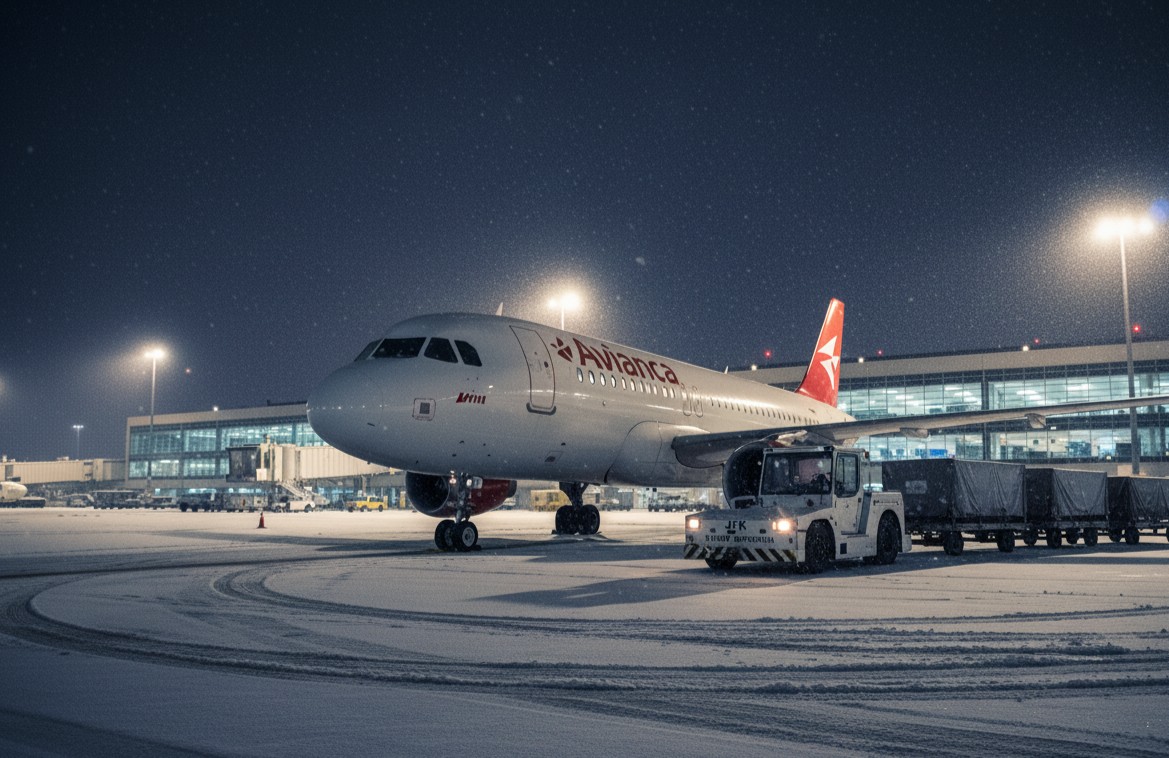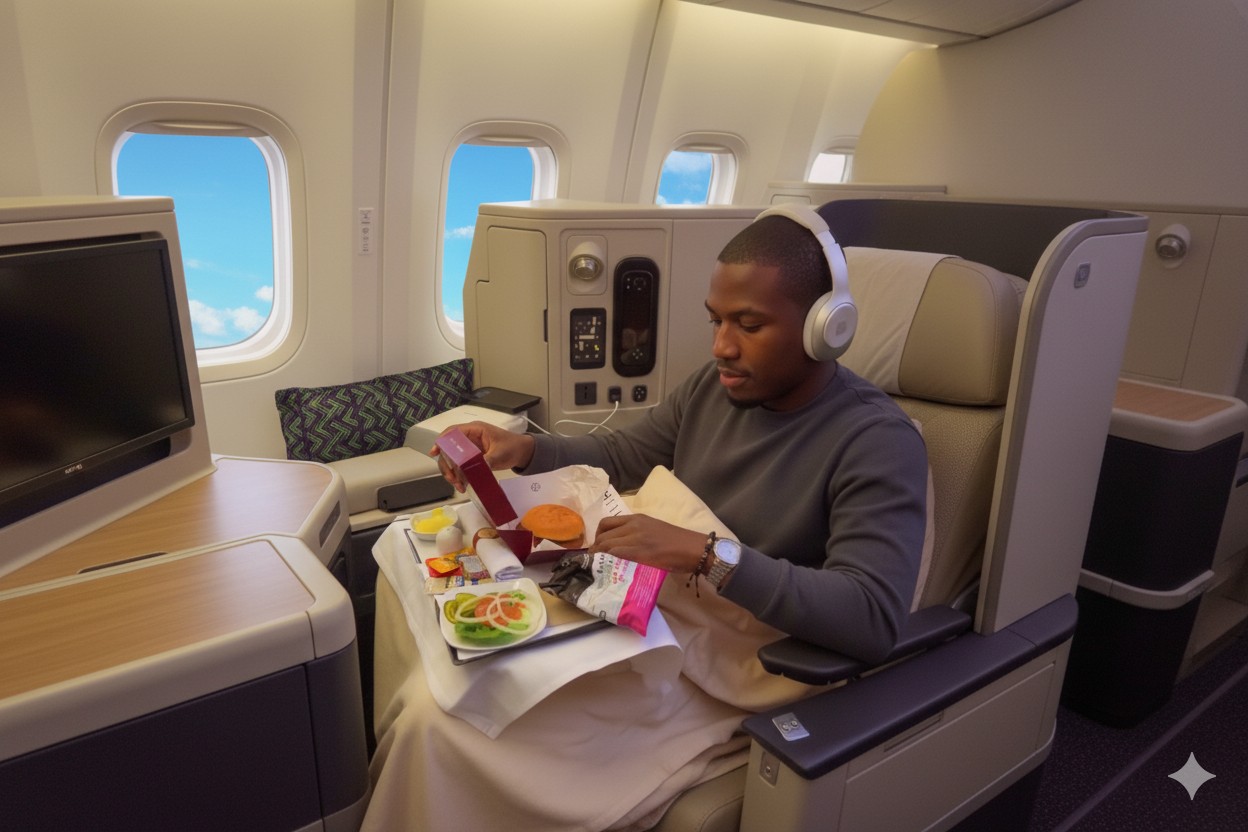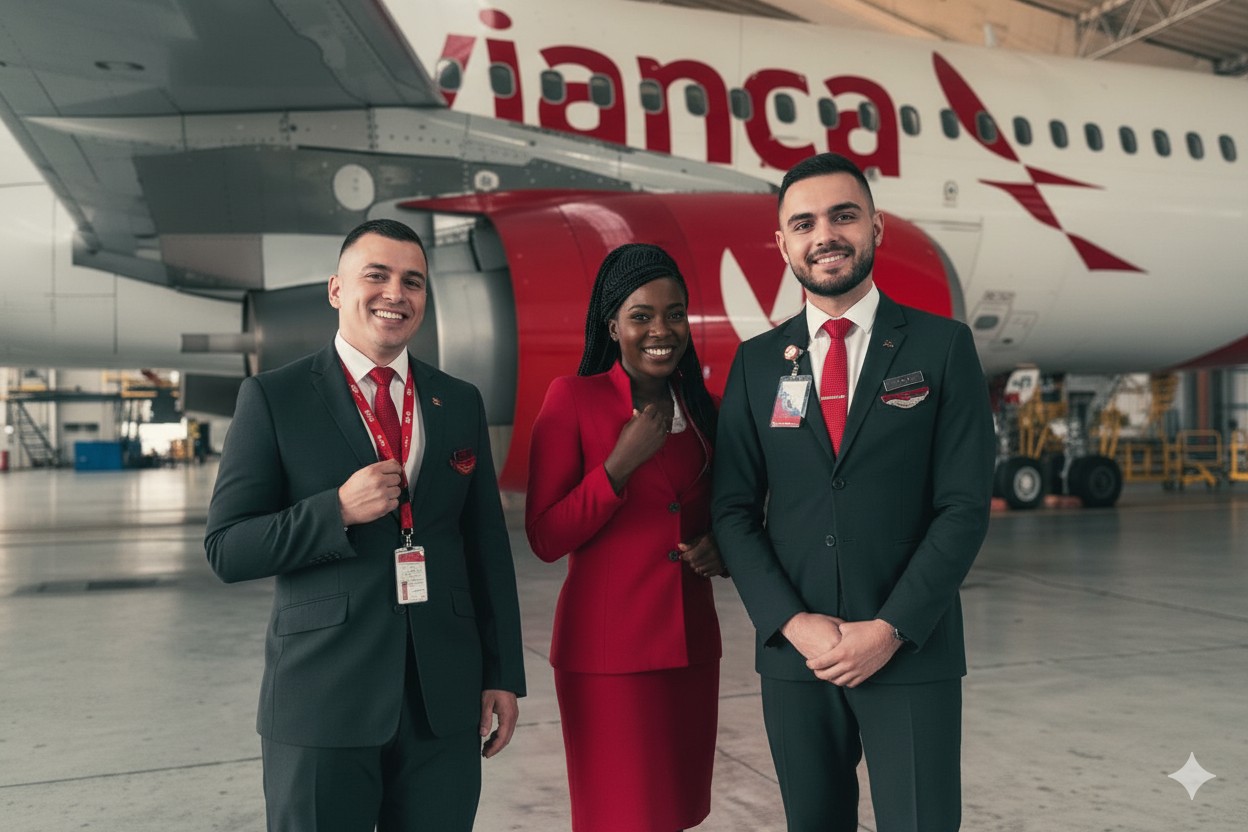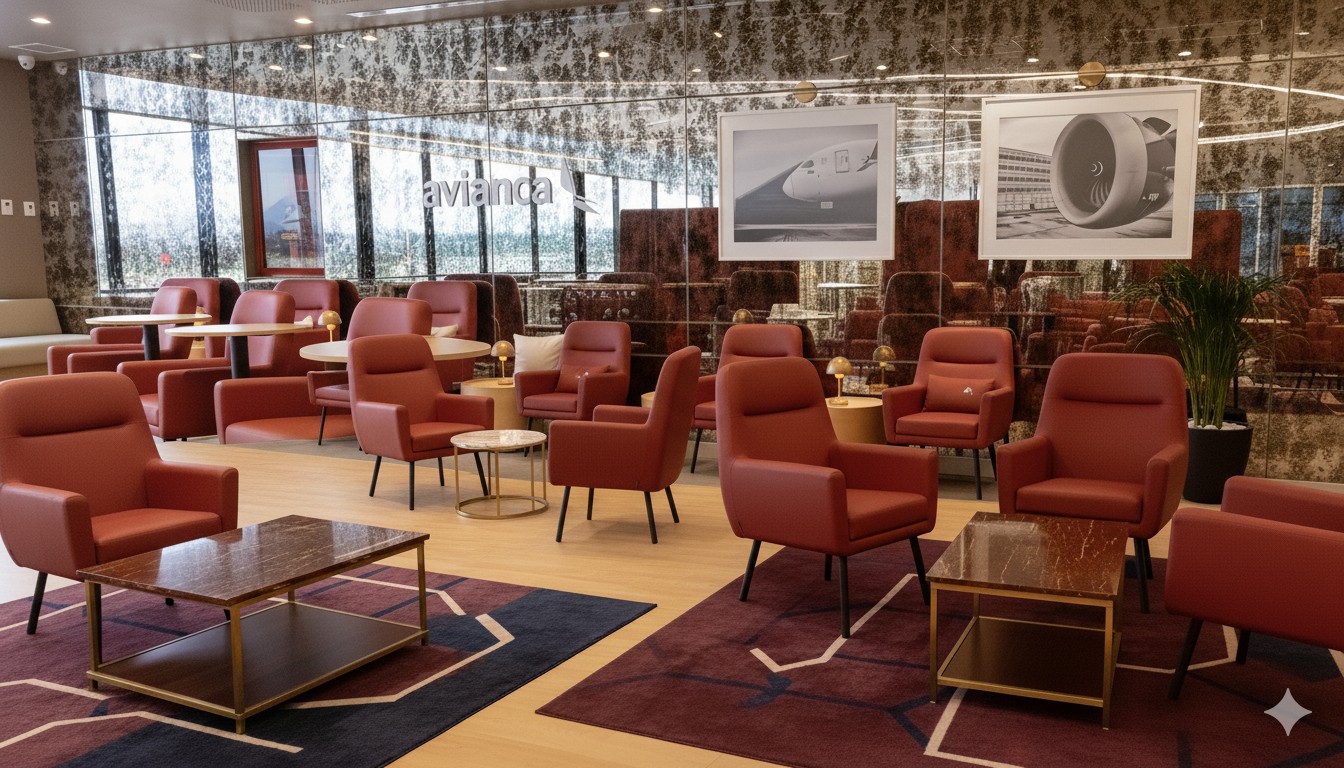October 14, 2025
For most American travelers, international flights usually mean choosing among Delta, United, or American Airlines. These carriers dominate the U.S. market, and their services, fees, and policies often set expectations. However, when venturing into Latin America, another name frequently appears: Avianca, Colombia’s national airline and a Star Alliance member. While Avianca has a long history—it’s one of the oldest continuously operating airlines in the world—it remains relatively unfamiliar to many U.S. passengers who are used to the American “big three.”
So, what happens when you compare Avianca to Delta, United, or American Airlines? In this review, we’ll break down every major aspect of the experience—fares, seating, Wi-Fi, baggage fees, food and beverage service, reliability, and overall value—using available data and passenger feedback. The goal isn’t to give a subjective opinion, but to clearly outline what an American traveler should expect if they book Avianca for the first time.
Now, if you are more interested in how Avianca compares to the main 3 US Airlines, here’s an info box.
Avianca’s Background and Brand Perception
Founded in 1919, Avianca is one of the oldest airlines in the world still in operation. For decades, it was seen as Latin America’s flagship carrier, connecting Colombia with Europe, North America, and within the region. Its longevity often surprises U.S. travelers who associate Latin American aviation with newer, low-cost startups.
This difference in perception matters: while U.S. travelers expect a familiar experience with the big three, flying Avianca often feels like entering a hybrid space—part traditional airline, part low-cost carrier.
Route Network and Destinations
 Avianca’s network is heavily concentrated in Colombia and Latin America, with Bogotá’s El Dorado International Airport (BOG) serving as its main hub.
Avianca’s network is heavily concentrated in Colombia and Latin America, with Bogotá’s El Dorado International Airport (BOG) serving as its main hub.
U.S. Connections: Avianca serves major U.S. cities such as Miami, New York, Los Angeles, Orlando, Washington D.C., and Dallas. Flights are frequent to Miami and New York, reflecting the strong Colombian-American community.
Regional Strength: Within Latin America, Avianca covers cities in Peru, Ecuador, Costa Rica, El Salvador, and beyond, often providing direct connections that U.S. carriers do not.
International Reach: Avianca also flies to Madrid, Barcelona, and London, though its European network is smaller than that of American, Delta, or United.
Comparison:
Avianca: Best positioned for Colombia and regional Latin America. For U.S. travelers focusing on South America, Avianca can be more direct than U.S. carriers.
Fleet and Aircraft Experience
Avianca operates a mixed fleet of Airbus A320 family aircraft for short and medium-haul flights, and Boeing 787 Dreamliners for long-haul routes.
Short/Medium-Haul (A320, A319, A321): Standard seating layouts, often all-economy for regional routes. Expect tight legroom and limited entertainment.
Long-Haul (Boeing 787-8/9): Modern aircraft with lie-flat Business Class, larger windows, and better cabin pressure/humidity for comfort. These planes offer a comparable experience to United’s Polaris-equipped aircraft or American’s Flagship Business on select routes.
Comparison:
- Delta, United, American: Larger, more diversified fleets, with multiple widebody types (777, 787, A330, A350).
- Avianca: Smaller, less diverse, but its Dreamliners are competitive with U.S. carriers on long-haul flights.
Seats and Cabin Comfort
Passenger reviews on Tripadvisor rate Avianca’s legroom and seat comfort at about 3.5 out of 5—average compared to global standards.
Economy: Seat pitch ranges from 30–31 inches, which is typical of U.S. carriers. The seats are slimline, designed to maximize capacity, so cushioning can feel minimal on longer flights.
Business Class: On widebody aircraft (such as the Boeing 787), Business Class offers lie-flat seats and a modern cabin. However, availability depends heavily on the route; many regional flights in South America only have economy seating.
Seat Selection Fees: On lower-tier fares, you’ll pay extra for choosing a seat, just like with Delta Basic Economy or United’s restrictive fares.
Fares and Pricing Structure
Avianca’s pricing strategy has changed significantly in recent years. Like U.S. airlines, it has shifted toward a more “unbundled” fare structure, where passengers pay for additional services that used to be included.
Basic Economy Equivalent: Avianca offers “XS” fares, which are similar to Delta’s Basic Economy or United’s Economy Basic. These are the cheapest options but come with restrictions: limited carry-on allowance, no checked bags, and seat assignments only at check-in (or for a fee).
Regular Economy: Higher-tier fares (S, M, L) provide more flexibility, such as carry-on plus checked baggage, advanced seat selection, and some ticket change options.
Business Class: On longer international routes, Avianca offers Business Class, which is closer to what American carriers provide on transcontinental or international flights. These fares usually include two checked bags, priority boarding, lounge access, and full meal service.
In comparison:
Delta, United, American: All three have introduced basic economies with similar restrictions. However, U.S. carriers often still allow a free carry-on in addition to a personal item, while Avianca has been stricter on certain routes.
Price competitiveness: Avianca can be cheaper than U.S. carriers for flights between the U.S. and Colombia, especially if booked in advance. But once you start adding baggage fees and seat selection, the final price sometimes comes close to what you would pay with Delta or United.
Inflight Wi-Fi and Entertainment
One of the biggest differences between Avianca and the major U.S. carriers is Wi-Fi availability.
- Avianca: As of 2025, Wi-Fi is not consistently available across the fleet. Some widebody aircraft (like the Boeing 787s used on long-haul flights) offer limited connectivity, but many regional planes do not. Inflight entertainment is also inconsistent: some aircraft have personal seat-back screens, while others rely solely on streaming to your personal device.
- Delta: Offers free Wi-Fi (via T-Mobile partnership) across almost all domestic flights and is expanding coverage internationally.
- United: Has Wi-Fi on nearly all mainline aircraft, though it usually costs extra.
- American: Similar to United—Wi-Fi widely available, but paid.
This is a major adjustment for U.S. travelers. If you’re used to logging into Wi-Fi on every flight, Avianca may feel behind.
Food and Beverage Service
 Food and beverage policies are where Avianca stands out—often not in a positive way for passengers expecting U.S.-style service.
Food and beverage policies are where Avianca stands out—often not in a positive way for passengers expecting U.S.-style service.
Short flights: On domestic and regional routes, Avianca no longer provides complimentary snacks or drinks in economy. Instead, food must be purchased, and the buy-on-board menu is relatively limited.
Long-haul flights: Meals are included in both economy and business. These are standard airline meals, roughly comparable to what United or American serve on similar routes.
Beverages: Complimentary soft drinks and water are usually provided on long-haul, but not always on short-haul economy. Alcoholic beverages are generally free only in Business Class.
Comparison:
- Delta, United, American: Even in Basic Economy, passengers on U.S. carriers usually receive free soft drinks, coffee, and small snacks (cookies or pretzels).
- Avianca: No snacks or drinks at all on short flights, unless purchased.
Baggage Allowances and Fees
Baggage is one of the areas where costs can add up quickly.
- Personal Item: Allowed for free across all fares.
- Carry-On: Included only with standard fares and above. The lowest fare classes (XS) do not include a carry-on, which can feel stricter than U.S. airlines.
- Checked Bags: Usually not included in economy, except for higher fare tiers or long-haul flights. Fees vary by route but can range from $30–$60 for the first bag.
- Business Class: Includes two free checked bags.
Comparison:
- Delta, United, American: All three allow one free personal item and one free carry-on across all fares, even in Basic Economy. The first checked bag is usually $30–$35.
Safety and On-Time Performance
 Safety Record: in recent decades, its safety standards have improved significantly, in line with international aviation norms. According to AirlineRatings, it holds a 7/7 safety rating.
Safety Record: in recent decades, its safety standards have improved significantly, in line with international aviation norms. According to AirlineRatings, it holds a 7/7 safety rating.
On-Time Performance: Avianca has mixed punctuality, with strong records on long-haul flights but frequent delays on regional routes within South America.
Reliability, Check-In, and Boarding
According to passenger reviews, Avianca scores about 3.5 out of 5 for check-in and boarding.
Punctuality: Avianca has had challenges with delays, particularly on regional routes.
Boarding: Boarding is structured by fare tier and elite status. Priority boarding is available for Business Class and Star Alliance Gold members.
Check-In: Available online and through the Avianca app, though some users report issues with functionality.
Frequent Flyer Program
Avianca’s loyalty program is LifeMiles, part of Star Alliance.
Miles can be redeemed across the alliance (including United Airlines). Avianca often runs promotions selling miles at a discount, which can make premium redemptions attractive. On the downside, redemption rates can be unpredictable, and customer service for LifeMiles is often criticized.
For Americans, the main benefit is that Avianca’s program connects directly with United through Star Alliance, giving more options for international redemptions.
Lounges
 Avianca operates VIP lounges in Bogotá and other hubs, which are available to Business Class passengers and Star Alliance Gold members. Reviews describe them as functional but not luxurious, often crowded during peak times. In comparison, Delta Sky Clubs, United Clubs, and American Admirals Clubs are more standardized and polished in the U.S.
Avianca operates VIP lounges in Bogotá and other hubs, which are available to Business Class passengers and Star Alliance Gold members. Reviews describe them as functional but not luxurious, often crowded during peak times. In comparison, Delta Sky Clubs, United Clubs, and American Admirals Clubs are more standardized and polished in the U.S.
Customer Service
Tripadvisor reviews place Avianca’s customer service at 3.5 out of 5, which is average but points to some frustration.
Call Centers: Passengers often report long wait times and difficulty resolving issues, especially with refunds or schedule changes.
In-Flight Crew: Experiences vary—some crews are praised for professionalism, while others are described as indifferent.
Comparison: U.S. carriers also struggle with customer service, particularly when handling delays, cancellations, and refunds. However, Delta generally scores higher in satisfaction surveys compared to Avianca or even United and American.
Critiques & Red Flags
While Avianca offers a lot of promise and can be a good value in certain circumstances, it’s crucial for American travelers to be aware of repeated complaints and red flags raised by real passengers. These are not isolated rumors — they appear across consumer complaint sites, airline-review aggregators, forums, and news coverage. Below is a breakdown of some of the more serious criticisms and warnings.
Overselling, Bumping, and Forced Rebooking
One of the most frustrating issues we’ve encountered with Avianca is their habit of overselling flights—selling more tickets than there are seats—then reassigning passengers at the last minute without proper notice.
On one trip, a family we met in the connection hall was shocked to discover that the four seats they had booked and confirmed were suddenly gone when they landed for their layover in San Salvador. They had to scramble to be rebooked on a later flight.
On another occasion, a lady traveling with us was first told that her connecting flight was full and that she’d have to be rerouted. Yet later that same day she was rebooked—ironically onto the very same flight she had been denied, which still had several empty seats when she finally boarded. These kinds of mix-ups show how inconsistent communication can be when flights are oversold or rearranged at the last minute.
Hidden Fees, Overcharges, and Ambiguous Policies
Another recurring pain point is the unexpected extra charges that show up after booking—fees for carry-on bags, paying for seat selection, or even just for water.
On one leg of our trip, we were charged about $100 for a carry-on and then an additional $120 at the connection for the exact same bag. It felt like a bait-and-switch: the fare looked inexpensive at first, but by the end the extras made it far pricier than expected. Situations like this often leave travelers feeling caught off-guard by costs that weren’t clearly stated upfront.
Customer Service, Refunds, and Communication Breakdowns
What makes these problems harder to resolve is the difficulty of getting timely help. When one of our flights was canceled during the pandemic, the airline only offered a travel credit. Months later, when we tried to use the credit, it failed to apply properly online. After repeated calls and emails, the issue still wasn’t fixed, and the partial refund finally arrived only after a long and exhausting back-and-forth.
We’ve also spoken with other travelers who described similar challenges—long waits on the phone, vague answers about voucher policies, and no clear path to resolve urgent problems. This lack of responsive customer service can turn what might have been a small inconvenience into a drawn-out ordeal.
Avianca Experience Comparison
| Feature | Avianca | Delta | United | American |
| Basic Fare | XS fare, no carry-on | Basic Economy, 1 carry-on | Basic Economy, 1 carry-on | Basic Economy, 1 carry-on |
| Seat Pitch (Economy) | 30–31 in | 30–32 in | 30–31 in | 30–31 in |
| Seatback Screens | Inconsistent | Widespread | Widespread | Widespread |
| Wi-Fi | Limited | Free (domestic, expanding) | Paid, widely available | Paid, widely available |
| Food (short-haul) | None included | Snacks & drinks | Snacks & drinks | Snacks & drinks |
| Food (long-haul) | Included | Included | Included | Included |
| Baggage | Carry-on not included in lowest fare | Carry-on included | Carry-on included | Carry-on included |
| Lounges | Functional, sometimes crowded | Sky Clubs | United Clubs | Admirals Clubs |
| Frequent Flyer | LifeMiles (Star Alliance) | SkyMiles | MileagePlus (Star Alliance) | AAdvantage |
| Safety Rating | High | High | High | High |
Final Thoughts
For an American traveler accustomed to Delta, United, or American Airlines, flying Avianca comes with both advantages and trade-offs:
Advantages: Competitive pricing (if you pack light), Star Alliance membership for frequent flyers, modern aircraft on some long-haul routes, and a strong network in Latin America.
Drawbacks: No free snacks or drinks on short-haul economy, stricter baggage rules, limited Wi-Fi, and inconsistent customer service.
What sets Avianca apart most is its regional strength. If your destination is Colombia or nearby Latin American countries, Avianca may offer the most direct and frequent routes. But if you value consistency in service—particularly complimentary food, reliable Wi-Fi, or premium seating upgrades—U.S. carriers may feel more predictable.
In essence, Avianca sits somewhere between a traditional full-service airline and a low-cost carrier. It offers the network and brand recognition of a major airline but applies cost-cutting strategies similar to budget carriers, especially on short flights. For U.S. travelers, the biggest adjustment will be the lack of complimentary food and drinks on regional flights and the stricter baggage policies compared to what Delta, United, or American include—even in their most basic fares.
If you understand these differences and plan accordingly, Avianca can be a practical option, especially for routes into Colombia and connecting destinations across Latin America. But if you’re expecting the same service standards you get with Delta or even United, you may find the experience more bare-bones than anticipated.
Meet the Team
We’re creators, marketers, and explorers — united by our love for Colombia and passion for storytelling. From content creators and strategists to social media experts and tour managers, we bring your journey — or your brand — to life.
CEO & Founder
Shawn Christopher Leamon
Read More
Social Media Director
Daniel Cardenas
Read More
Operations
Camilo Ceballos
Read More
Graphic Designer
Juan Sierra
Read More
Sales Manager
Juliana Gama
Read More
Social Media Specialist
Dayana Parra
Read More
Sales
Fabian Briñez
Read More
Sales
Johanna Vargas
Read More
Content & Multimedia Strategist
Diana Bustos
Read More
Visual Content Creator
Gabriela Munoz
Read More
Marketing Tours & Content Manager
Sergio Gonzalez
Read More
Storytelling Specialist
Brian Nino
Read More
Finance & Strategy Lead
Fernando Soto
Read More
CEO & Founder
Shawn Christopher Leamon
Read More
Social Media Director
Daniel Cardenas
Read More
Operations
Camilo Ceballos
Read More
Graphic Designer
Juan Sierra
Read More
Sales Manager
Juliana Gama
Read More
Social Media Specialist
Dayana Parra
Read More
Sales
Fabian Briñez
Read More
Sales
Johanna Vargas
Read More
Content & Multimedia Strategist
Diana Bustos
Read More
Visual Content Creator
Gabriela Munoz
Read More
Marketing Tours & Content Manager
Sergio Gonzalez
Read More
Storytelling Specialist
Brian Nino
Read More
Finance & Strategy Lead
Fernando Soto
Read More
